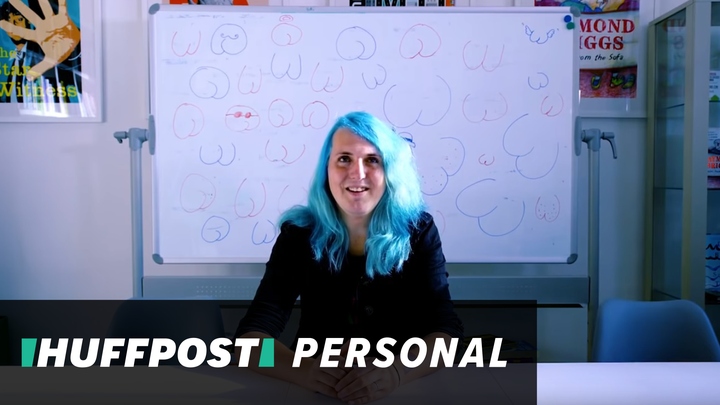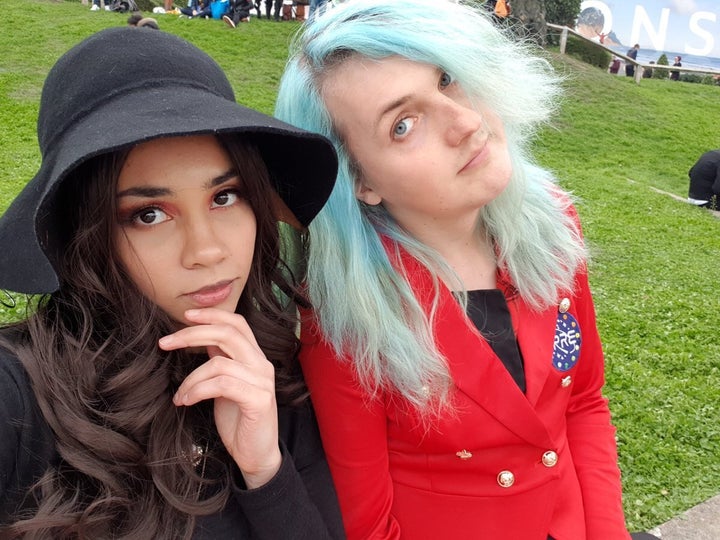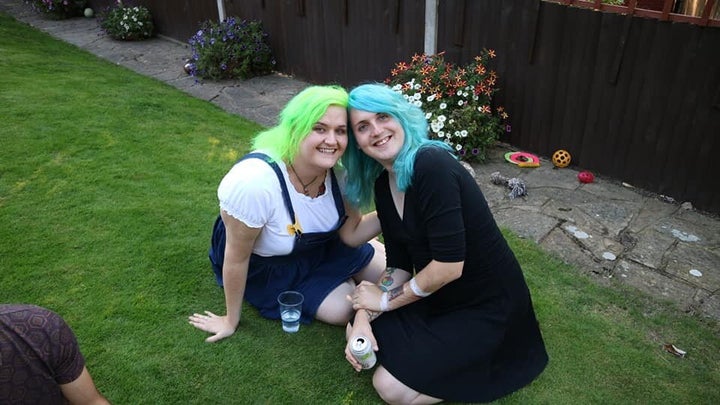
For the first twenty years of my life, I felt very isolated and alone. I had a loving family, and I was constantly surrounded by people, but I really struggled to connect in meaningful ways with most of the people around me. I was considered a bright and well behaved child, but I just gave off the energy of being different. Adults labelled me eccentric. Kids labelled me as weird. I considered myself broken.
My name is Laura, I’m 27, and in my late teens I was diagnosed on the autism spectrum, came out as a trans woman, and started to identify myself as a lesbian. These were an eventful few years in my life, and ultimately lead to me being a far happier person, but the road there was a long and tricky one, filled with a lot of missed opportunities to work out who I was.
So, how did I get to nearly twenty without realising I was a gay, autistic, trans woman? Well, the short version is that adults around me missed a lot of signs, and I ignored a lot of signs I wasn’t ready to face.
“So, how did I get to nearly twenty without realising I was a gay, autistic, trans woman? Well, the short version is that adults around me missed a lot of signs, and I ignored a lot of signs I wasn’t ready to face.”
As a very young child, it was clear something about me was a little off. I wouldn’t sleep unless my hand was rhythmically squeezed, I would make weird repetitive beeping noises every third step while walking, I struggled to eat a wide variety of foods, and I would get easily distressed by changes in structure and routine.
I was visited by special needs assessors when I started school, who basically concluded that nothing was wrong with me. The early years of school for me involved a lot of routine, following rules, and predictable days, which was the kind of environment I excelled in. They saw nothing wrong – I wasn’t being disruptive, so they just moved on without much more thought.
The problem came as I entered my teenage years, and suddenly school became a much less routine affair. Classes were now on a schedule where lesson times, rooms, and seating plans changed from one week to the next. Homework was issued and due back on dates that followed no predictable structure. In an instant, my life lost its predictable routine and structure, and the autism symptoms I had managed to somewhat keep manageable until then began to resurface with a vengeance.
When it comes to my trans status, I grew up knowing something didn’t feel right about living as male, but without any positive or nuanced media portrayals of trans people to look to, I didn’t know there was a name for how I felt.

It wasn’t until I hit puberty, and testosterone started to make physical changes to my body, that I really realised something was wrong. I get that puberty is uncomfortable and weird for everyone, but I knew there was something uniquely wrong about my experience.
As my facial hair grew and my voice dropped, I felt like I was becoming a stranger, some monster I didn’t recognise, someone who I didn’t want to be. Those changes were the beginning of me realising that something I had long suspected was real, I was not meant to live as male.
With regards to being a lesbian, I always knew I was attracted to women, but my attraction always felt a little wrong, and I couldn’t work out why. It wasn’t until I came out as trans that things fell into place. I had always known who I wanted to love, I just hadn’t known who I wanted to love them as.
As a gay autistic trans woman, I spent a long time assuming I was a statistical anomaly. It’s estimated that around one in every 100 people is autistic, and around one in every 300 people is transgender. As such, I assumed you’d probably have to multiply those very small percentages together to get the odds of being both trans, and on the autism spectrum, but it turns out that is simply not the case.
“Transition helped me to feel more comfortable with who I am, and getting an autism diagnosis helped me to find the coping tools I needed to manage my life.”
In an article in Spectrum, it was quoted that “Between 8 and 10 percent of children and adolescents seen at gender clinics around the world meet the diagnostic criteria for autism”. Statistically, this means people who are trans are more likely to be diagnosed on the autism spectrum, and vice versa, and there’s a strong enough correlation to prove that it’s actually surprisingly common for both of these to overlap.
As a trans person on the autism spectrum, this statistical overlap was never explained to me by anyone in the medical field, which led to years of me struggling with unique struggles caused by that overlap. I struggled to shave my face properly or wear makeup because of the texture sensations on my face, I struggled to attend LGBTQ spaces like Pride parades and nightclubs because of the huge numbers of people, loud noises, and lights involved, and I struggled to learn more feminine mannerisms due to my struggles with recognising small details in other people’s actions. I never really got proper help for this, because the overlap simply doesn’t get discussed properly.
Over the years since coming out, things have really improved for me. I feel comfortable with my appearance, I found love, and I learned to cope with my autism symptoms, but I had to do so entirely through trial and error over the course of several years. There are guides out there for trans people, there are guides for coping with autism, but none for how to deal with living at that intersection. I think this is something which really needs to be addressed by the wider medical community, with more research done into why the overlap exists, and how to help people who live in that intersection.

As for me? Transition helped me to feel more comfortable with who I am, and getting an autism diagnosis helped me to find the coping tools I needed to manage my life. I make a living working from home as a writer, I know how to explain how I feel, and I have surrounded myself with people who love me for who I am. I just hope that the gay autistic trans people who come after me don’t have to struggle alone the way I did.
We’re more common than you would think, and we have our own specific needs that need addressing.
Laura Kate Dale is a journalist and author of Uncomfortable Labels, published by Jessica Kingsley on 18 July
Have a compelling personal story you want to tell? Find out what we’re looking for here, and pitch us on ukpersonal@huffpost.com